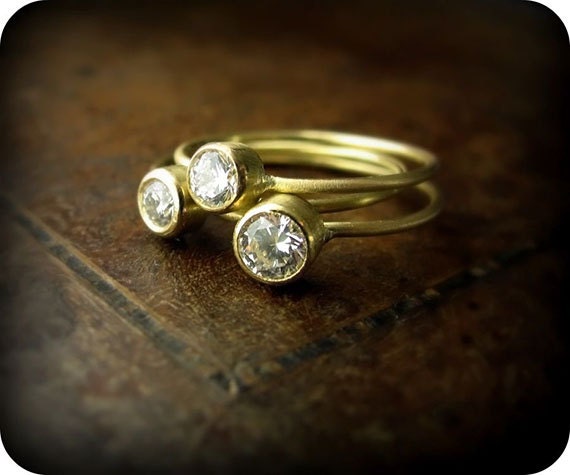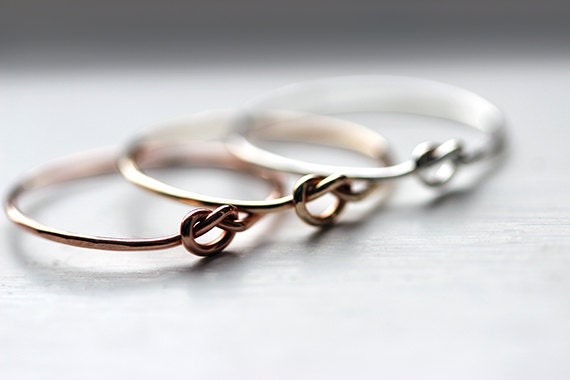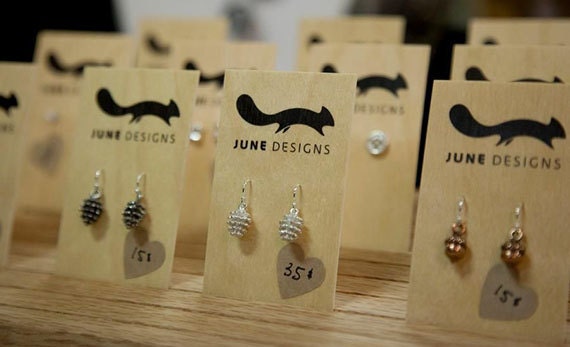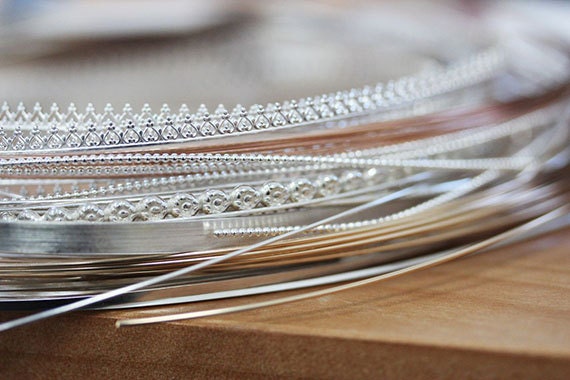Judging from the quality of Joelle Latreille’s gold and silver rings, necklaces, and earrings, you’d think she’s a lifelong jewelry designer. But quite the opposite is true. Animals and science were her original career callings. The 26-year-old French Canadian went to college for biology only to drop out a couple of years later to pursue her newfound hobby of making jewelry.
In June 2007, she opened her Etsy shop, Le Cubicule, and made her first sale within two weeks. After working diligently to develop new items and a customer following, she became a full-time Etsy seller in 2011.

Does Joelle ever regret dropping out of college? “I have my moments of doubt,” she says. “But when you believe in your products and you know you're doing the best you can, it's easier to fight that fear. When my sales aren’t up to what I expect, I just work harder.”
As she nears the 10,000 sales mark, with her collection of more than 100 designs, and 85% of her business coming from international sales, we invited Joelle to share her entrepreneurial insights and pricing tips.
How’d you land your first sale?
I think luck had a lot to do with my first sale. I started with 20–25 items, and was full of illusions. I was naively hoping that sales would roll in immediately, but I became more discouraged as the days passed. As a newbie, I didn't really know what to do, so I did nothing. I just waited.
Then, one day, despite my blurry photos, lack of new activity in my shop, and my not-so-good English, I sold two items to one person. I wasn't doing any promotion back then, so I think my items were just waiting for the right buyer.
How did you feel when you dropped out of university to pursue jewelry making, and what did friends and family say?
I won’t lie — it was hard. My parents are very educated, so I was afraid that they might be disappointed if I dropped out. It turned out that they didn't care that much, as long as I did something I liked. I'm so proud of what I’ve accomplished and so are the people in my life — and that's what matters to me most.
Why do you think your designs stand out on Etsy?
I can't say that my jewelry really stands out from other jewelry shops in terms of design. Most of my items are quite simple, and I think that's why they’re popular — they’re perfect for everyday wear. I also use quality materials to make my jewelry, and I try really hard to use recycled metals whenever I can.

Are you ever surprised by which items become hits?
I'm not surprised when something is popular. Oftentimes the opposite is true — I'm surprised when I'm convinced a new item is going to be a hit, and it ends up not selling very well. It also surprises me when an item that used to be super popular stops selling. My Constellation ring was definitely my best seller in 2008, and now it's just sitting in my shop. I think that it's partly a matter of trends, but maybe has something to do with the variety of items in my shop. I now have more rings to choose from, so people might prefer other designs that are more appropriate for them, or the ones that are less expensive.

What’s your approach to pricing?
Pricing is difficult for a lot of sellers, but it shouldn't be. It’s unfortunately common practice among artists to undervalue their work. I don't quite understand why — maybe because they feel bad about getting paid for doing something they like? Or maybe it's just a common trait for artists to be modest or insecure? I say be confident about your items — only you can determine how much they’re worth, because only you know the investment in time and money that it took to make them.

What pricing formula do you use?
(Production Cost + Profit) x 2 = Retail Price
The production cost includes materials, labor, and expenses. In order to use the formula properly, you have to know what these terms actually imply:
Materials:This one is simple. It's the actual cost of the materials you use to make the item.

Labor: This is your hourly wage multiplied by the time is takes you to make your items. Most people will make a mistake here. You will usually charge your customer only the time you spent creating their item — which is the production time — but that doesn't include all the time you spent working on other aspects of your business, such as customer service, promotion, research, etc. You have to take that into consideration, too, either by setting a higher production time in your formula (extra hours divided by the number of items you make) or by increasing your hourly wage.
For example, let's say you want to get paid $20 an hour. If you spend half your time actually making stuff and the other half is spent working on other tasks, your hourly wage needs to be $40. If you don't do that, you would end up getting paid only $10 an hour, since you would charge your customer only half the time you actually worked ($20 per hour for your production time and $0 per hour for the rest of your work).

Expenses: This one is often completely ignored, but running a business incurs some monthly or annual costs like listing and transaction fees, rent, electricity, Internet, insurance, equipment, etc. Don't forget to include a portion of these costs when pricing your items.
The total of these parameters is your production cost. If you sell it even a penny under that amount, you’ll lose money. As for your profit margin, that’s up to you. It’s typically 50–100% of your production cost, but it could be more or less.
With that strategy as a guide, you’re sure to pay yourself enough. Also, you don't need to use the same parameters for all your items, and your profit margin doesn't always have to be the same.
What's the most important thing you've learned as an Etsy seller so far?
To detach myself from my business. Even though you should welcome constructive criticism and use it to improve your shop, you shouldn’t take anything personally. It's difficult but crucial for your emotional health. Whether you received undeserved negative feedback, someone made an offensive comment about your work at a craft show, or anything else that could possibly have a negative impact on you, don't let it ruin your life.
If you can do something about it, do it, but if not, just try to put your emotions aside and let it go. It's normal to face that kind of challenge when you run a business, and I've learned that business is business — don't let it affect your personal life.
 Words by Joëlle and team
Words by Joëlle and team
My name is Joelle and I used to be a science girl. But not anymore! After studying health sciences, biology and anthropology, I realized that making jewelry was not just a temporary passion, it was my dream job!




